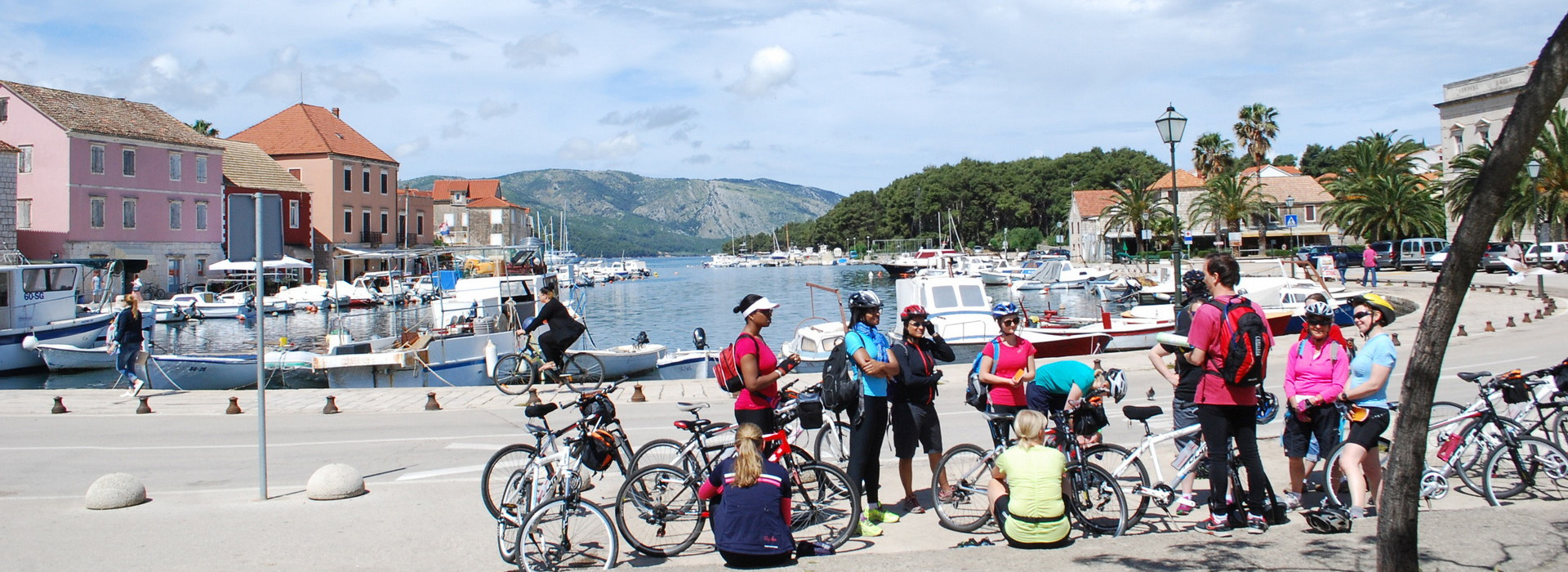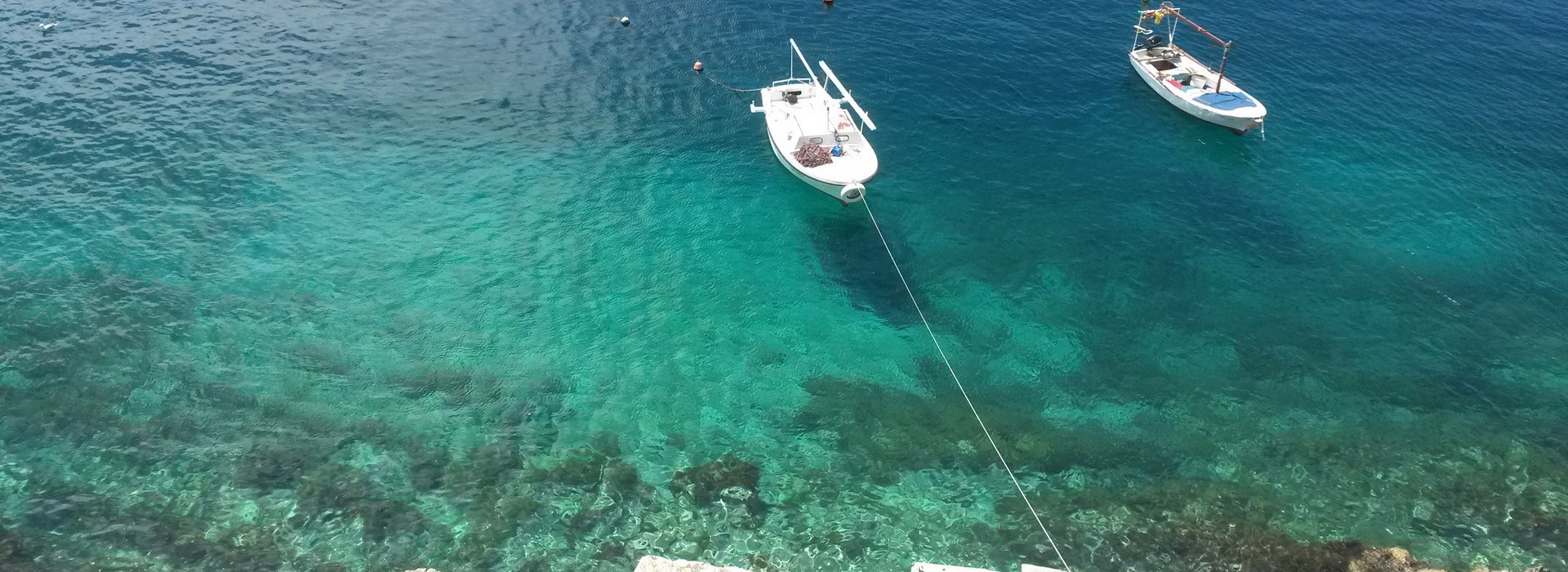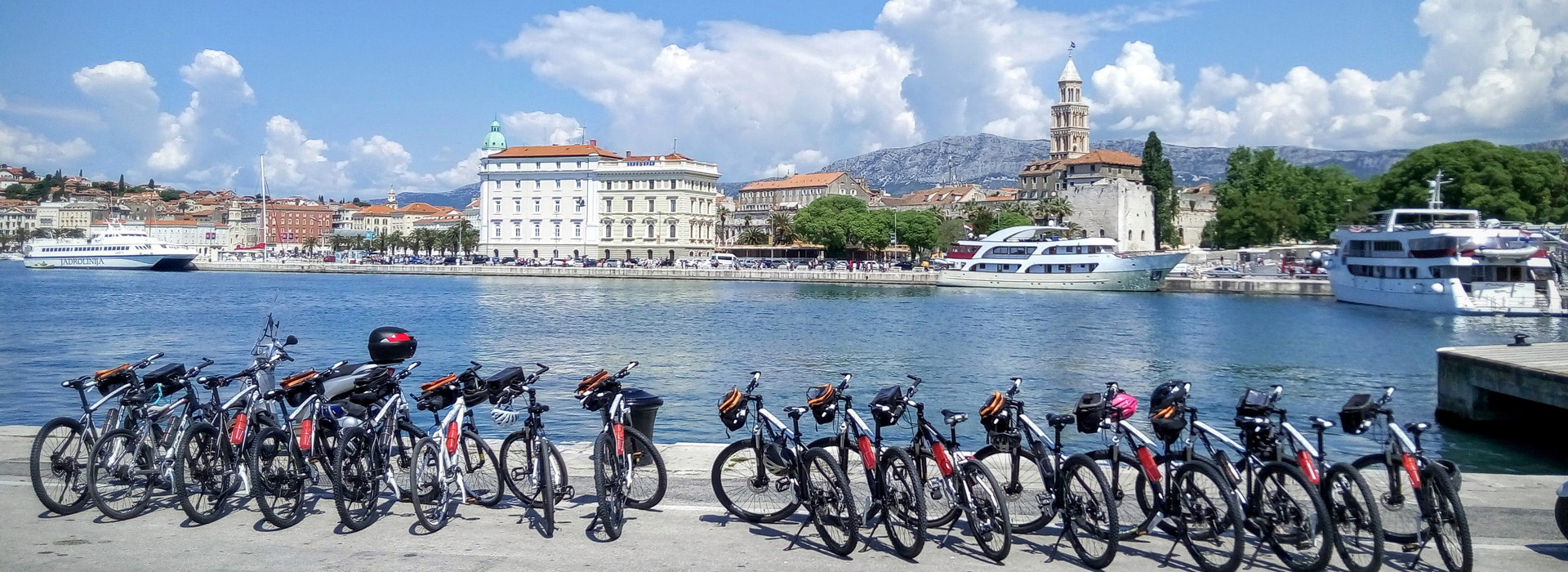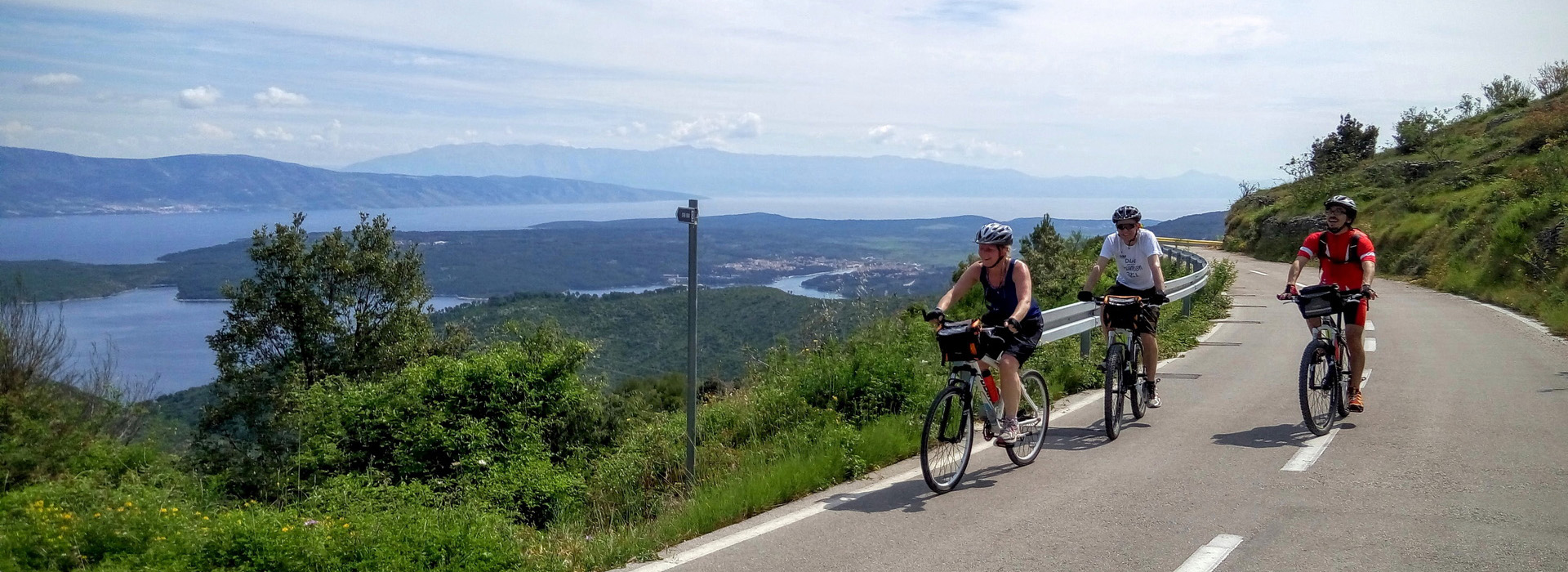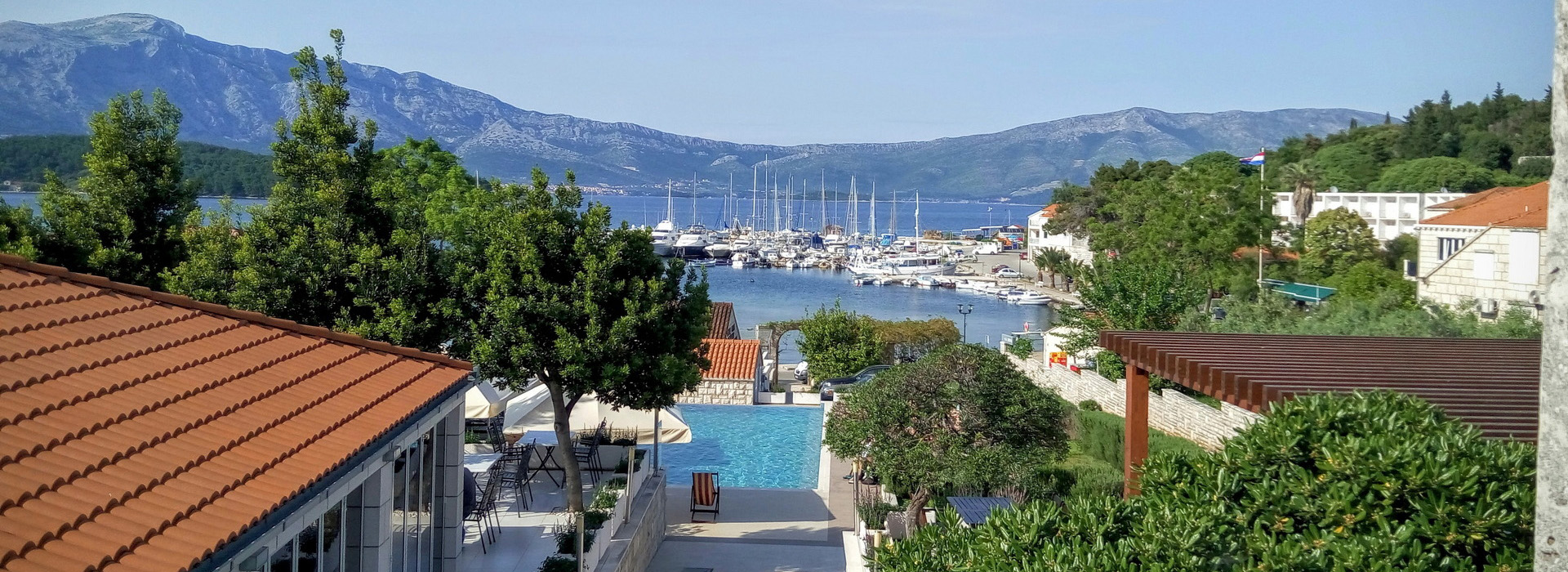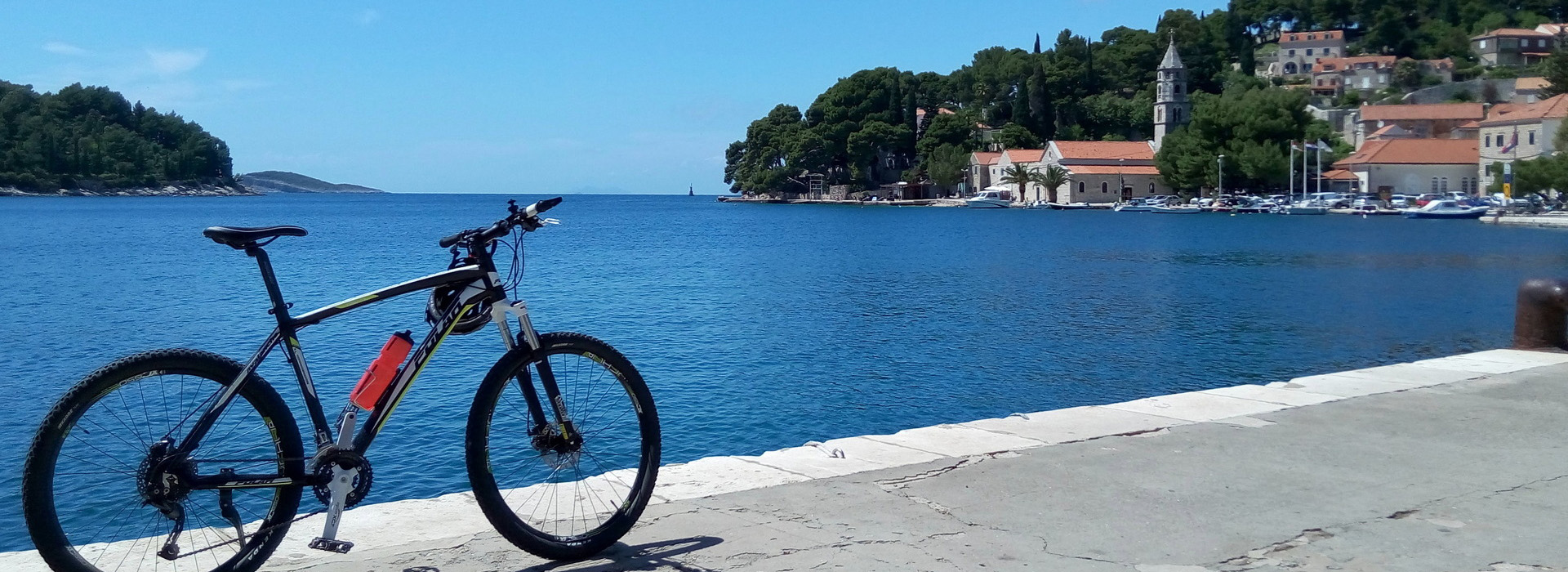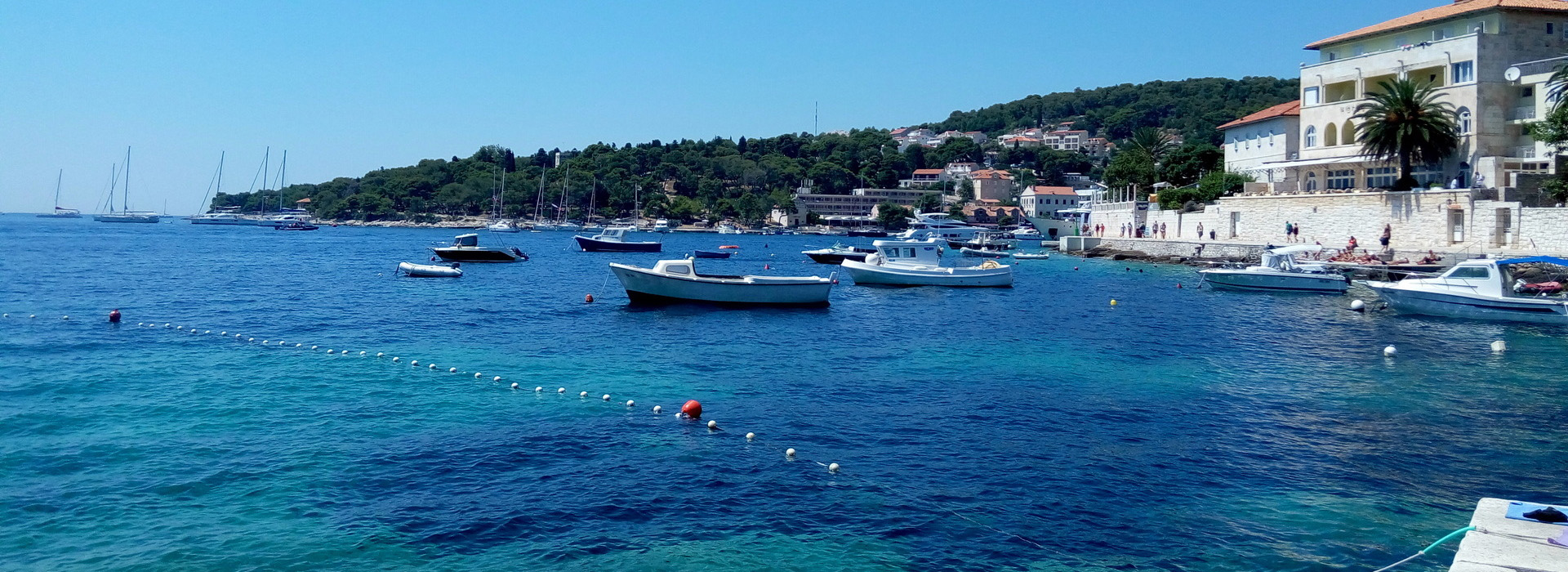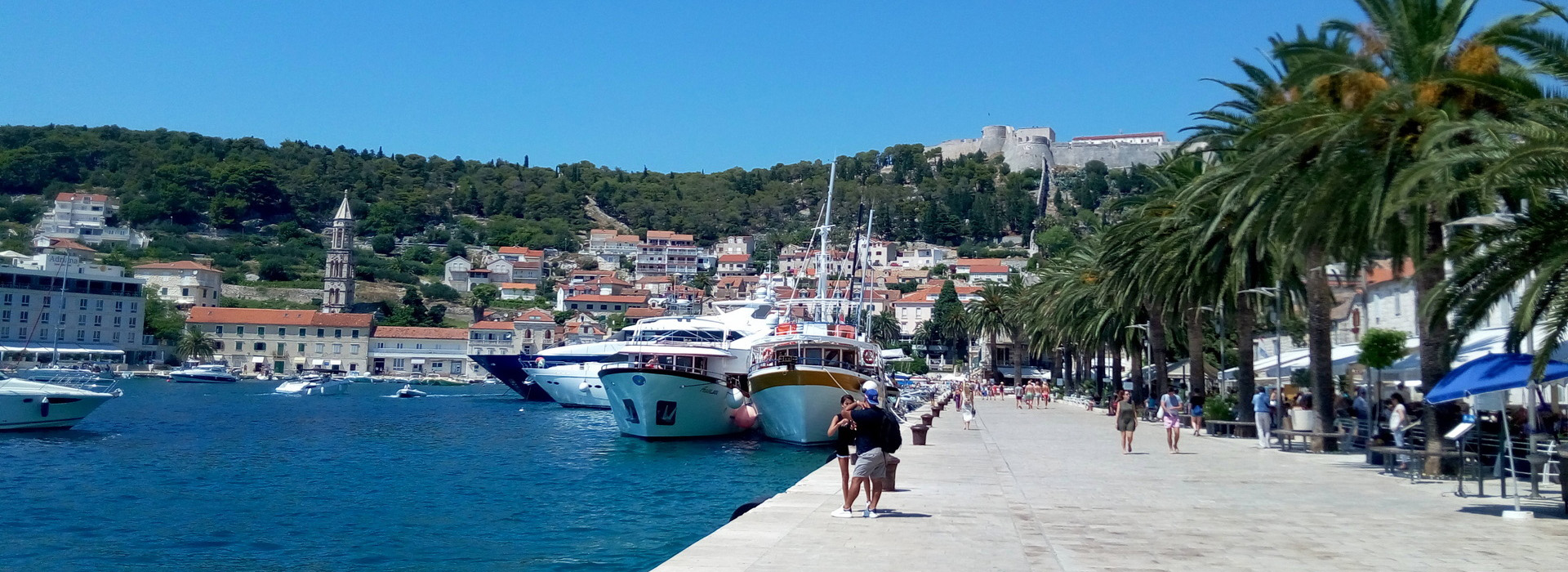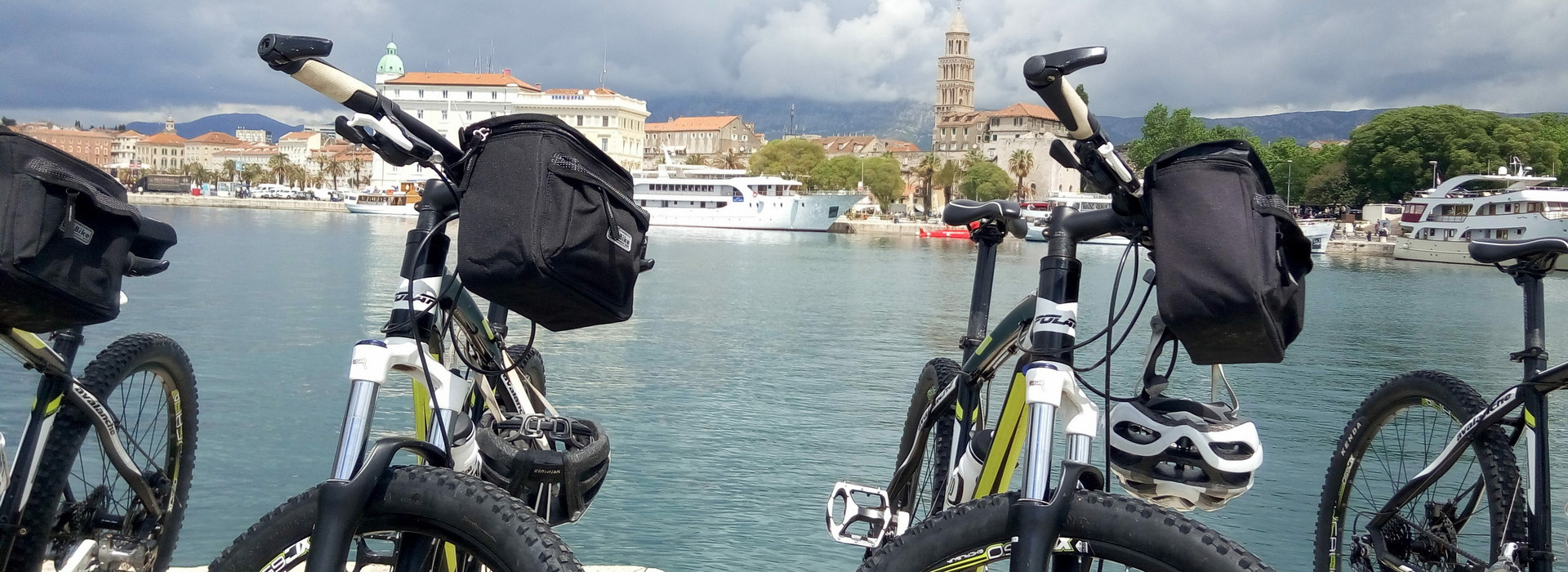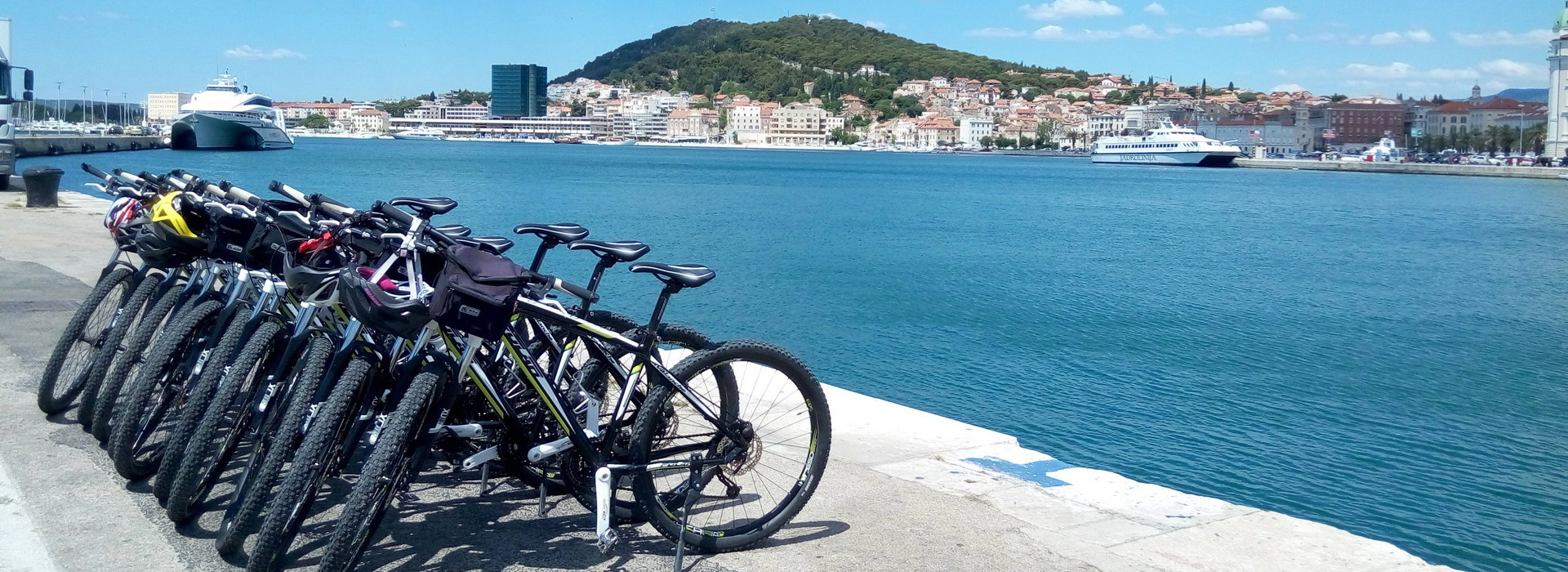
Cycling on the Dalmatian Coast Self-guided
Cycling holiday in the country of 718 islands, turquoise blue water, home of the Zinfandel grape, fresh seafood, lavender fields, the world's biggest truffle, the highest number of UNESCO Intangible Goods in Europe, and of course- Dalmatian dogs
8 days / 7 nights cycling self-guided holiday from Split to Dubrovnik via islands of Hvar and Korčula and Pelješac peninsula - from 1180 EUR (bicycle rental included)
-
YOU enjoy cycling, swimming, pine forests, olive groves, vineyards, wine, food, red-roofed coastal towns... WE arrange ferries, transfers, bicycles, guiding, mechanic support, meals, luggage transfer, lodging, and fun.
-
Meet Dubrovnik and Split, the gems of the Dalmatian coastline.
-
Explore Korčula and Hvar- some of the most beautiful islands of the Croatian archipelago.
-
Cycle in Konavle, to the contrast of dry and rugged coast around Dubrovnik, where mountains have stepped back providing a dramatic backdrop to the fertile region of vineyards and the lush fields.
-
Travel in a small group. The maximum group size is 15 persons.
-
Have a safe and risk-free booking. We have adopted all our procedures to WTTC (World Travel & Tourism Council), UNWTO (World Tourism Organisation), and local protocols and standards. Our booking and cancellation policy is adapted to new conditions and maximally flexible so you can not lose your money
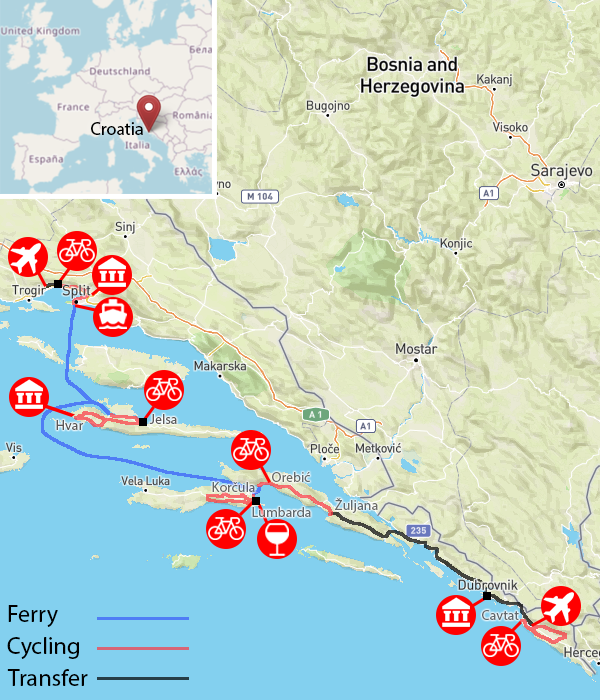
BLOG STORY
Read more on ACE Adventure blog
Experience Dalmatia on Wheels
The sights, the smells, tastes & textures, the vibrations, its curves, edges, hills & valleys from Split to Dubrovnik over Hvar and Korčula
Cycling grade:
Moderate
Five Days of cycling with daily distances ranging from 27km to 62km, one day of 13km long ride.
RECOMMENDATIONS FOR EXTENSION
An option to extend your holiday for additional days in Dubrovnik or any other coastal town is possible. Please contact us for the conditions and options.
Please read and respect ACE Responsible Tourism Policy.
Before you come on this trip please carefully read Rules of Bicycling Safety.
Book with confidence and risk-free. Please read our new booking and cancellation policy
Itinerary
-
-
Meeting our driver at the Split airport and transfer to the hotel in Kaštel Kambelovac town.
Our seafront hotel is ideally located in the small town of Kaštel Kambelovac only 8km from the airport and between Split and Trogir. If you arrive earlier today, you may choose to visit one of those coastal towns or simply relax on the cobblestone beach in front of the hotel. -
Meals Included: /
Activity Free time on arrival at accommodation.
-
-
-
We start the day with a transfer to Split. We will keep your luggage in a minibus until you explore the city of Split. Split is certainly one of the most beautiful towns in the Mediterranean. Whether you've been there before or not, relax and lose yourself in the stories of the local guide.
Afternoon you take a ferry to Hvar island. The old town of Hvar became a posh place and upmarket destination for tourists from all over the world. Your ferry docks in Stari Grad from where you cycle to Jelsa- a charming and quiet town away from the crowd in Hvar town.Option: A guided city tour of Split (2 hours)- 80€
-
Meals Included: Breakfast
Activity Cycling distance 15km, accumulated ascent 130m, descent 130m.
-
-
-
Today you cycle to the town of Hvar. The first leg will take us through vineyards and olive groves to warm us up for a long ascent to the village of Velo Grablje at an elevation of 400 meters above the sea. Accompanied with the fragrance of lavender we descent to Brusje and the town of Hvar. You may stop along the way and buy some homemade lavender oil. It used to be the main occupation for many locals. Although tourism has replaced agriculture, as the main source of income, the island is still well known for its lavender oil. We arrive in the old town of Hvar and we start our walk along the seafront and docks. Free time for lunch and for exploring the town at your own pace.
Afternoon, you cycle back a different way to Velo Grablje. As you can assume, you need to climb up to the village. But good thing is that the support vehicle is with us should you wish to sit it out and just enjoy the downhills and flatter sections. From the top of the hill, you have another 20km of downhill and flat terrain before we get to our hotel. -
Meals Included: Breakfast
Activity Cycling distance 60 km, accumulated ascent 950m, descent 950m.
-
-
-
After energizing breakfast, we transfer you to Hvar where you board a fast catamaran to Korčula. You will arrive in Kočula port in 1 hour and 10 minutes and your mechanic support will move your bicycles a night before over the mainland and few ferries so they could wait for you in the Korčula port. Korčula old town is stunning. Be careful, it could steal your heart while wandering its narrow streets and squares.
Afternoon you ride from Korčula to village of Kneze and after the small coastal town of Lumbarda where you stay next two nights. Your front sea hotel has a swimming pool and a terrace with a great view. But the day is not over. We recommend walking to a small winery in the town and taste some local wines and products. -
Meals Included: Breakfast
Activity Cycling distance 32 km, accumulated ascent 350m, descent 350m.
-
-
-
A full day's cycling tour of the island allows you to experience the elegance of rural Korcula, as you slowly make our way across the island to the small town of Čara, one of the oldest settlements on the island. We then head downhill to the pretty coastal village of Zavalatica, where the old traditions of fishing and farming are still very much alive. Here you can enjoy lunch (not included) in a local restaurant and take in the spectacular views of the crystal clear Adriatic Sea. We recommend a fish meal that would be normally a daily catch of the local fishermen.
After lunch, you cycle through the fertile landscape, through vineyards with sweeping coastal views, past the terracotta roofs of Pupnat, the smallest village on the island, before joining the road which takes us back to Lumbarda. -
Meals Included: Breakfast
Activity Cycling distance 62 km, accumulated ascent 950m, descent 950m.
-
-
-
After breakfast, you have a private transfer to Korcula harbour. A catamaran ride to Dubrovnik where you have a private transfer to your hotel. The next two nights you stay in the hotel in the lively Babin Kuk area. Dubrovnik Old Town is easily reached by a twenty-minute public bus ride.
Free day to explore Dubrovnik.Option: A guided city tour of Dubrovnik(2 hours)- 80€
-
Meals Included: Breakfast
Activity Transfer, Free time
-
-
-
A final ride takes you through the beautiful Dalmatian countryside, heading out towards Cavtat and starting our ride with a gradual ascent along a countryside road with panoramic views over the Konvale Valley. We cycle in the olive growing region, passing through green groves and the roads lined with tall cypress trees. You will have a drink break in an idyllic village on the banks of the river Ljuta, before making our way through the valley to the coastal town of Cavtat where you finish your last ride and have lunch (not included).
Returning to Dubrovnik, the afternoon is then free to enjoy the “jewel of the Adriatic”. Once described by George Bernard Shaw as paradise on earth, the old medieval town of Dubrovnik still retains a unique atmosphere and charm. One of the greatest pleasures for many visitors is to have a drink in one of the cafes on Stradun street and watch the world go by, whilst they are being watched by the city patron, St. Blaise, or Sveti Vlaho as the locals call him. -
Meals Included: Breakfast
Activity Cycling distance 34 km, accumulated ascent 380m, descent 380m.
-
-
-
The trip ends after the transfer to Dubrovnik airport which is a 25 kilometre and 40-minute drive from Dubrovnik.
We suggest adding an additional night if you wish to further explore the ancient city of Dubrovnik, UNESCO World Heritage Site. -
Meals Included: Breakfast
Activity Transfer
-
Tour Information
-
SPLIT
The story of Split is already 17 centuries old, dating to the time the Roman Emperor Diocletian decided to build his Palace right on the peninsula near the great Roman city Salona, where he wanted to spend the last years of his life. During these 1700 years, the Palace slowly turned into a city, which to this day lures with its rich tradition, glorious history and beauty of its natural and cultural heritage.
Diocletian Palace and the entire historical core of Split have been on the World Heritage UNESCO list ever since 1979, and not only for the extraordinary preservation of the Palace but also because of the Palace and its city (or the city and its Palace, if you like) continue to live a full life. All historical layers from the old Rome, middle ages till today are still visible and alive in this structure. A walk through the ancient city takes you through time, along with the great examples of ancient architecture like Peristyle, the middle-aged Romanesque Church and Gothic Palace, Renaissance portals of the noblemen’s houses, Baroque facades and modern architecture superbly merged in the rich heritage.
Such stratification is mirrored in everyday life of Split. Local inhabitants sit in the same cafes, restaurants, shop in the same stores as tourists, giving them the impression that, by arriving to Split, they became a part of the city and its rhythm. The vegetable market and the fish market represent the centre of each family’s life in Split, just as the entire social life of this city of 200 thousand reflects on the Riva (waterfront), where every guest should endeavour to have his coffee alongside noisy, temperamental folk of Split.HVAR
Hvar island is the sunniest spot in Croatia with over 2.724 sunny hours each year. Gently rolling hills painted a brilliant purple by the fertile flowers, lush vineyards nestling at the foot of rugged mountains, gorgeous beaches, restaurants, boutiques midst the medieval streets of Hvar Town are just a few of the treats to enjoy on this dream of an island. Although tourism on the island has reached an enviable level, islanders have never neglected agriculture and traditional products like lavender and rosemary aromatic plants, high-quality honey, wine and olive oil.
One of the jewels of Croatian tourism, Hvar Town is the capital and largest settlement of the island of the same name. Its rich Venetian architecture harks back to its glorious cultural past. The rich cultural heritage which includes the oldest public theatre in Europe continues today with the Hvar Summer Festival, whose locations include the Franciscan Monastery, Veneranda, the Arsenal and theatre, and the Hanibal Lucic garden. Don’t forget to climb to the Spanish Fortress for fabulous views of the town and Pakleni Islands.KORČULA
The old town of Korčula is one of the best-preserved medieval island towns in the Mediterranean. The walls and fortresses protected its strategic location in the past. The Town’s streets are laid out in a fishbone pattern, providing the inhabitants with safety and comfort. The Statute of the Town and the Island from 1214 regulated the life of the people of Korčula. Korčula is an ideal year-round holiday destination. You can explore the island on foot or by bike, or climb on its hilltops and refresh yourself walking through pine forests, enjoying the beautiful panoramic views of the countryside from the lookouts, watch some of the most beautiful sunsets. Owing to the top-quality local seasonal food, the abundance of seafood and top-quality wine, Korčula attracts all those in search of gastronomic delights.
In Čara, next to the parish church of Saint Peter, in the middle of the village, grows an old cypress which is protected under Croatian laws for the preservation of nature. The best known product of Čara, besides extra quality olive oil, is the famous white wine Pošip.
Pupnat is the smallest and one of the oldest villages on the island of Korčula, located on the highest point of 360 m above sea level, 11 km from the town of Korčula. Finds from Illyrian and Roman times have been found in the village. Numerous ancient single-story houses covered by stone slabs are preserved, especially sheep and goat houses southwest of the village.LUMBARDA
Lumbarda is a small fishermen’s village of around 1200 inhabitants. The village is built around a small bay and on the hills behind it and is surrounded by large sandy vineyards. In the 3rd century BC, a Greek settlement was founded here from which originated the Psephism and the gnathia vases found in graves. Since the 16th-century prosperous Korčula Town landowners built their summer houses called “kaštel” on the best sites around the fields, some of them still well preserved and inhabited by local families.
Sveti Rok parish church with a nave and two aisles stands on Vela Glavica hill in the middle of the old village, and there are several small old chapels in the village itself: St Bartul, St Peter, The Nativity of the Virgin (Mala Gospa). The church of the Holy Cross (Sv. Kriz) from 1774, in front of which is a characteristic porch, is surrounded by the vineyards.
For centuries local people were farmers, mostly grape growers, fishermen and stone-masons.DUBROVNIK
George Bernard Shaw was enchanted by DUBROVNIK. For him, it was paradise. Millions of people also take home happy memories from this “jewel of the Adriatic”. Dubrovnik has a remarkable history. An independent, merchant republic for 700 years (abolished by Napoleon in 1806), it traded with Turkey and India in the East (with a consul in Goa, India) and had trade representatives in Africa (in the Cape Verde Islands). It even had diplomatic relations with the English court in the middle ages. (There is a letter from Elizabeth I on display in the City Museum in Dubrovnik). Its status was such that powerful and rich Venice was envious of this Croatian-Slav city. The old town was completed in the 13th century and remains virtually unchanged to the present day. Tall ramparts surround it and there are only two entrances to the old town which lead to the Stradun, the city’s promenade. One of the greatest pleasures for many visitors is to have a drink in one of the nearby cafes and watch the world go by, whilst they themselves are being watched by the city patron, St. Blaise, or Sveti Vlaho as the locals call him.
KONAVLE AND CAVTAT
Konavle – a place in the very south of Croatia, is the most southern part of today's Dubrovnik Riviera, with whose purchase the Dubrovnik Republic rounded off its territory in the 15th century. Konavle is a region with particular natural beauties and contrasts: mountain and valley, green hills and naked stone, the blue and the green. The name Konavle derives from the Latin word "canale", "canalis", in the local dialect "konali", what is connected with the viaduct, which, in the times of the Romans, carried water from Vodovađa to Epidaurum, today's Cavtat.
Cavtat is the largest and the only urban centre in Konavle that has been built up deliberately. It is located on the peninsula of Rat, which surrounds the well protected and accessible bay together with the peninsula of Sustjepan. In its harmonious architecture, the centuries-old natural, spiritual and material affiliation to the Dubrovnik Republic can be observed. Cavtat, the antique Epidaurus, was an important Roman colony in this region, which expires after the breakthrough of the Slavs and the Avarians into this area after the decline of the Western Roman Empire, and their inhabitants flee to the neighbouring settlement Laus-Rave-Ragus, wherefrom Dubrovnik arose. In historical sources, Cavtat is also mentioned with the name Ragusa Vecchia, what testifies to the connection of these two cities. In the times of the Dubrovnik Republic, Cavtat was the second most important seaport, place of trade and of administration in the Republic after Dubrovnik. -
During this holiday we stay in carefully selected hotels with 3 star standard. All hotels, except the one in Dubrovnik, have a waterfront location. The hotel in Dubrovnik is located in the lively Lapad Bay area, close to many restaurants and bars. Dubrovnik Old Town is easily reached by a twenty-minute public bus ride. The hotels in Hvar, Korcula and Dubrovnik have swimming pools. The Hotel Resort Fontana in Jelsa (Hvar island) has 2* classic and standard rooms, and 4* deluxe rooms. Our groups are accommodated in deluxe rooms.
We pay special attention to the choice of food so you can enjoy great choices of local specialities. If you have some dietary restrictions we will be happy to adapt our menu to you. -
-
7 nights based on BB service in the hotels described in the program
-
Private transfers:
- from Split airport to hotel in Kastel Kambelovac
- from hotel in Kastel Kambelovac to Split town
- from Jelsa to Hvar port
- from Lumbarda to Korcula port
- from Dubrovnik port to hotel in Dubrovnik
- from hotel in Dubrovnik to Dubrovnik airport
-
Luggage transfer:
- from Stari Grad port to hotel in Jelsa
- from Korcula port to hotel in Lumbarda
-
Ferry and catamaran tickets:
- from Split to Stari Grad (Hvar island)
- from Hvar to Korcula
- from Korcula to Dubrovnik
-
bicycle use from day 2 to day 7
-
GPS treks of all cycling tours
-
24 hours telephone/ WA supports
The following services are included in the price:
The price is based on double room occupancy and minimum group size of 2 people - 1.180€ per person.
A single room supplement is 290€
Single person departure supplement 180€
E-bike rental: 260 Euros
The tour is available from the 1st of April to the end of October
High season supplement (from the 3rd of June to 1st of September) - 240€
Bicycles
We provide 24 speed hybrid bicycles. They are designed for riding both on paved and not paved roads with 28" wheels. Every bicycle has handlebar bag with map case as well as water bottle. Bicycle bag can carry max 5kg-11lb weight. If you prefer you can bring your own saddle and have us install it on our bikes. All our bicycles are provided with platform pedals. If you are used to ride a bicycle with clipless pedals they are welcome to bring them and we will install them on our bicycle.
E-bikes are also available for this trip. Our E-bikes are Scott E-Sub Cross or similar.
-
-
-
Travel Information
All distances in Croatia are given in kilometers. 1 mi=1,61 km, 1km =0.62mi, 1ft=0.3m/ 1inch=2.54cm
Weather Information
The coldest month of the year is January with average temperature a little bit over 0˚C. Spring is usually very pleasant with daily temperature between 15˚C and 20˚C and occasional rain and showers. The hottest months are July and August with average temperature about 28˚C and daily temperature above 32˚C. In July and August we usually have some days with daily max temperature about 35C.
Packing suggestions
Casual seasonal clothing is recommended for most occasions. You may wish to bring a light sweater and a light jacket. Padded bicycle shorts and bicycle gloves are useful. Sport shoes/ sneakers would be fine for cycling tours as all our bicycles are provided with platform pedals (if you bringing with you clip-less pedals you should bring also adequate shoes). We strongly recommend that you wear a bicycle helmet whilst cycling. We believe that there is no helmet like your own and we do not provide helmets locally. Like a well-fitting pair of walking boots, helmets are a very personal item of equipment. It is also more hygienic to wear your own rather than one which has been used by someone else previously. We recommend bringing a bicycle helmet, cycling sunglasses and some bicycle or walking rain gear. You should also bring some SP and anti-mosquitoes cream. Also, bring a swimsuit for swimming opportunities on the trip.
NOTE: A cycling helmet could be bought locally for the price of 30EUR. Please order it in advance.General Information
Currency and Exchange
Kuna is monetary unit in Croatia. For 1 Euro you can get 7,30 dinars (current exchange rate). In all cities and towns you can find change offices. Most of them have a good exchange rate and do not charge commission. Most of change offices are open from 8am to 8pm. ATM machines are available in Split, Hvar, Stari Grad, Jelsa, Korčula, Dubrovnik, and they require a PIN number. Most of the restaurants and shops accept credit cards (Visa, MasterCard, American Express, Diners). The most widely excepted credit cards are VISA, closely followed by MasterCard. Traveller’s cheques are a little harder to change. Neither personal nor travellers’ cheques can normally be exchanged for goods in shops, so credit cards make far more sense.
Banks are generally open from 08:00 to 19:00 on weekdays and from 08:00 to 15:00 on Saturdays.
In smaller towns it is useful to have enough cash.
Most of the shops are open from 9am to 9 pm and remain open through lunch.
Restaurants: The main meal is taken at lunch from 1pm to 3pm. Restaurants serve dinner in the evening from 8pm till 11pm.Electric Current
In Croatia electric current is 220 volts, 50 HZ. To use American or British electrical appliances a plug adapter is necessary. Electric plug used in Croatia is type C (the same one is in use in Belgium, Egypt, Italy, Hungary, Luxemburg, Netherlands, Norway, Bulgaria, Romania, Switzerland, Turkey, Vietnam, etc.
Telephone
Telephone plug used in Croatia, is US RJ-11 phone plug
Telephoning Home
Most of the telephone cards (AT&T…) do not work here. You can telephone from Post Office and pay after the call. The most convenient way for telephoning home is to use your mobile phone. Note that telephoning from Croatia will involve roaming charges, so please double-check with your mobile provider at home about the rates and conditions.
To make a direct international call, first dial 00 (code to access international line) then the country code, the area code and local number. The country code for Australia is 61, Norway 47, Great Britain is 44, USA and Canada 1, France 33, Germany 49. To make a national call just dial area code and local telephone number.
ACE Emergency phone (24h available) +381 (0)64 24 76 311.
Language
Official language is Croatian but English is widely spoken specially in a bigger towns. Latin Alphabet is in used.
INSURANCE
Travel insurance is highly recommended for all clients whilst on a tour organized by ACE. Clients together with their personal property including baggage are at all times solely at their own risk. Clients are wholly responsible for arranging their own insurance. Clients are responsible for ensuring that they are in possession of private Travel Insurance with protection for the full duration of the tour in respect of at least medical expenses, injury, death, repatriation, cancellation and curtailment, with adequate cover. Clients making their own arrangements should ensure that there is no exclusion clauses limiting protection for the type of activities included in their tour. Clients should satisfy themselves that any travel insurance is what they require and should arrange supplementary insurance if need be.
Responsible Travel
Before you come on the tour please read and respect ACE Responsible Tourism Policy
Personal Expenses
MEAL PLAN
Meals other than those included in the itinerary are paid for separately by traveler. Examples of some costs are provided below:
-
Coffee/ Tea - 1-1.5 Euro
-
Soft drink - 1.5-2 Euro
-
Bottle of beer - 1.5-3.5 Euro
-
Bottle of wine - 5-20 Euro
-
Two course meal - 10-20 Euro
-
Three course meal - 15-25 Euro
Local fares in small towns
Tipping
Although entirely voluntary, tipping is a recognized part of life in this part of the world. Gratuities for the staff of the ACE Adventure is discretionally but always appreciated by the staff and we will be happy to provide guidelines.
-
-
Photos
Dates & Prices
BOOKING
The tour is available from April to end of October.
Tour cost is 1180€.
High season supplement (from the 3rd of June to 1st of September) - 240€ per person
The price is based on double room occupancy and minimum group size of 2 people.
Single travellers:
A single room supplement is 290€
Single person departure supplement 180€
RECOMMENDATIONS FOR EXTENSION
Longer or shorter options are available
Optionally:
E-bike rental: 260€










